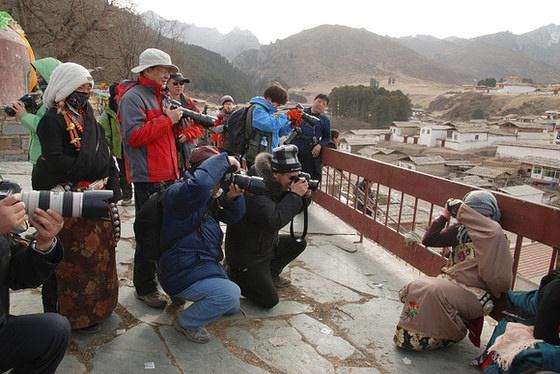Traveling in Tibet

Compared to other ethnic groups in China, Tibetans are known for their unique customs and culture. Each village and valley in Tibet may have their own unique sets of social behaviors. So, it is important to stay observant and never assume something that’s acceptable in Lhasa will also apply on a remote mountainous village. There are do’s and don’ts that we should apply while traveling in Tibet and it is important that are respectful to locals. Good relationships with local will enrich our overall experience and we will be able to interact with them better. Despite local differences, there are some common rules that we should know. In any are of Tibet, it’s not acceptable to step over food or any part of human’s body. This can be quite challenging if we are sitting on the ground and surrounded by many locals. Religious teachings, lunch and festivals may involve a large number of people sitting on the ground. If we are not sure, it is better not to sit and observe from a safe distance. If we do sit, we should sit at the outer part of the group, so we will be able to get out easily.
Whatever we do, we should always receive and give foods with both hands. This is a common sign of politeness in Tibet. Another rule is to avoid touching anyone on their chest or head. While tapping someone’s head is a sign of friendship in some countries, this is a real sign of disrespect in Tibet. Although this rule may not apply for small children, we should still refrain from doing this in Tibet. Tibetans use hand signs when talking to express their opinions. Thumbs ups are used to indicate good things and something that’s average is shown by middle finger that’s pointed sideways. Something of low quality would be indicated by pinky fingers. The heart of many houses in Tibet is stove or hearth. It’s an important part of the house, so we shouldn’t put damp shoes or socks on the hearth.
Taking pictures is a common part of traveling to a distant, interesting place, especially the one like Tibet. When we do this, it’s important that we show enough courteousness. Before photographing someone, we should ask the person. Photographing statues, painting and other religious things inside monasteries can be prohibited. It’s safer to photograph the nature, a group of people from safe distance and interesting building from the outside. Religious sites or buildings are usually indicated by small prayer flags. Even if some of the flags have fallen on the ground, we shouldn’t go near them or even stand on them. There are often writing on rocks and we shouldn’t stand on them. Always look for any sign of religious objects around us, so we won’t accidentally do bad things. Due to its high elevation, weather in Tibet can be unpredictable and although summer is the warmest time, it is not always the best time. There could be frequent rain in Tibet, especially between June and August. Early fall is dryer and it’s not as cold as winter.
